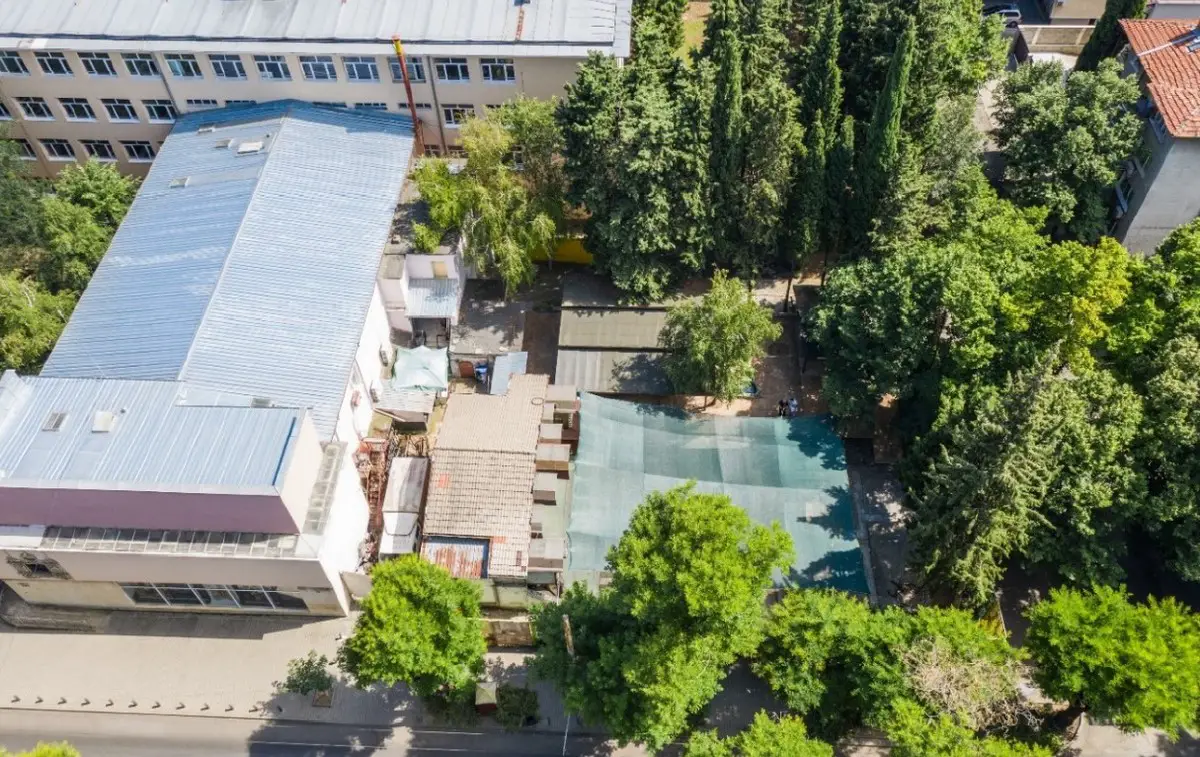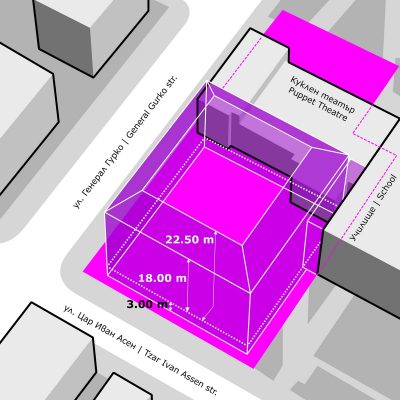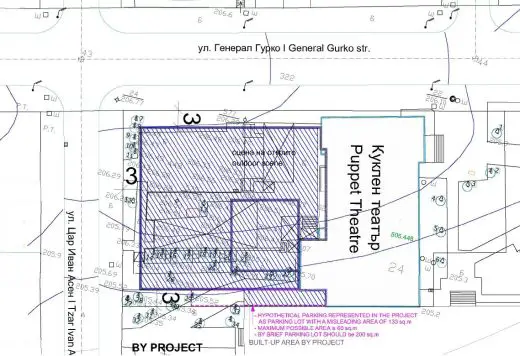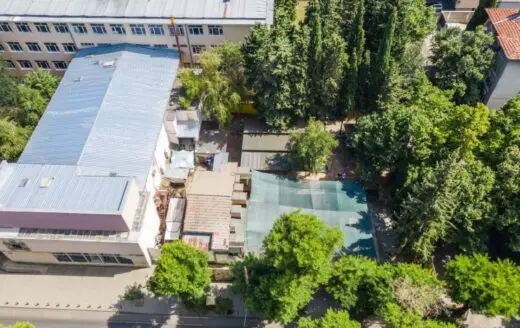EPAC Experimental Puppetry Arts Centre Bulgaria Design Competition, Stara Zagora architecture contest news
EPAC Experimental Puppetry Arts Centre Bulgaria Competition News
post updated 5 September 2023
We received a critical document about this competition, and felt on balance it would be good to share with our readers.
Comments welcome.
Location: Stara Zagora, Bulgaria
Organiser: OPTIMISTAS
First place: UNAS Studio
Participants: 174
The information below was receieved from arch. P. Georgieva:
EPAC – Experimental Puppetry Arts Centre Design Competition, Bulgaria
The Experiment
The Experimental Puppetry Arts Centre – Stara Zagora, Bulgaria.
After the announcement on 28.07.2023 of results from:
International Open Architectural Competition for a conceptual de-sign of the EPAC – Experimental Puppetry Arts Centre at State Puppet Theatre – Stara Zagora.
The STATE PUPPET THEATRE in Stara Zagora and the Ministry of Culture, supported by Stara Zagora Municipality launched the competition on 10.04.2023 through the OPTIMISTAS company chosen by them as organizer. The company is registered in Bulgaria and consists of two people – architect Yavor Panev and lawyer Tsveta Yotsova.
The only architectural Public Procurement in Bulgaria for a period of four years? Reference: www.kab.bg
This makes it a Major Event and the right moment to discuss the way in which an architectural competition should be commissioned, organized and judged in Bulgaria, to be successful.
According to the official website of the Chamber of Architects in Bulgaria, in the competitions section, for the period 2019- 2023, it can be seen that the last architectural competition was for a building of Karin Dom, Municipality of Varna, announced on November 19.2019 www.kab.bg with the same company OPTIMISTAS as organizer.
The organization of the contest for the conceptual project of the EPAC – Stara Zagora largely predetermines its final result.
I. Announcing, organization and judging of the Competition – Public Procurement
Part of the questions are:
1. Why such a socially significant International Architectural Competition was not officially announced on the website of the Chamber of Architects in Bulgaria kab.bg, where it should be.
2. On the website of the Union of Architects in Bulgaria www.bularch.eu, the competition appears only as a request from the manager of the Stara Zagora State Puppet Theater for support and assistance, to which there is no response.
3. By what criteria was the company OPTIMISTAS chosen as the organizer for announcing, holding and judging the competition.
4. In the 2019-2020 competition for Karin Dom, organized by the same company OPTIMISTAS, with the participation of 174 projects from the country and abroad, the first place was awarded to UNAS Studio, Biliana Asenova, Sasha Chabaty. Is it a coincidence that four years later, in the second for that period architectural competition in Bulgaria and for completely different type of building, a theater, with International and Bulgarian participation of 98 projects, the first place was awarded to the same firm UNAS Studio – Bilyana Asenova, Saša Ciabatta? /There is a difference in the spelling of the names, but they obviously are the same.
5. How and under what criteria was the jury selected? Who is responsible for the level of expertise of its single members? Is it appropriate, within a nine-member jury, the presence of two curators and one cultural manager for precise architectural assessment to the nearest hundredth? Their expertise would be sufficient at stage of preparing for the competition brief. The chairman of the jury himself, the Romanian architect Constantin Goagea, is presented as an consultancy expert on museum buildings, which is far from the type of theater building.
6. It is a well-established practice in competitions like this, when the results are announced, the jury team to make a short explanation of their decision and some recommendations, at least to the awarded projects.
This is a missed chance from the jury itself to prove that it is at the level of the vision of modern and emblematic building aimed by the Client.
Instead, on the website of the competition, the organizers, OPTIMISTAS company, along with all 98 projects, have published too long mathematical tables. In only one of them there are 588 figures, which arrange the participants “perfectly” with astonishing accuracy to hundredths. Everyone who wishes to find out information about the competition is simply “stunned” as if nothing can be asked. This overzealousness on numbers, however, left the feeling that the jury is hiding behind some obscure mathematical operations and does not have the courage to stand behind its decision and defend it.
7. It is strange that the three awarded projects are based on radically different, contradictory and mutually exclusive concepts. It seems as they were judged by three different juries, or at least by three completely different sets of criteria. The lack of argumentation of the jury on the awarded projects raises the fears that it is a question of vicious circle of practices in Bulgaria, or in short, a “trick”. The second and third project, being unrealistic or completely different from the first one, actually cannot be real option and just make the first one a matter of fact. It is not realistic for anyone to go back and look at the other 95 projects, which would take weeks and things finally would be watered-down. Paragraph 22.
These are only part of the questions about the competition which the organizer OPTIMISTAS is expected to answer to.
Their answer would certainly be that the competent international jury was so stuck to the brief criteria that had decided to present the competition results in the form of mathematical tables.
It would really be a daunting task to analyze all the 98 projects. However, it is quite realistic to check out how the first prize-winning project of UNAS Studio met the criteria of the competition brief. This is not about an architectural analysis of the project, which was the jop of the jury, but is only to check the brief indicators satisfaction.
2. Analysis of the competition criteria satisfaction by the first prize-winning project
The project could be seen on the competition website.
In the brief there are five evaluation criteria:
Indicator 1 (K1): FUNCTIONALITY AND USABILITY
Defining element in this type of THEATER BUILDING is its functional organization. It is not acceptable crossing the flows of:
1. Visitors
2. Actors
3. Supplying the puppet theater with sets, costumes and materials for their production, consumables for maintenance, etc.
On the all three floors in the UNAS Studio building, you can see complete „chaos” in terms of this basic requirement for normal function of any theater. The main flows to the building not only cross each other, but there are ubnormal scenarios. The common “controlled contakt between artists and visitors”, something that even a non-professional can see inside any theater building, is completely neglected here. An actor who wants to see a friend from the audience before or after performance must go down the staff only staircase to the basement, cross diagonally the warehouse-workshop or the rehearsal hall, and from there head to the other, public staircase. Then to face the visitors using the toilets on the basement level and go up one floor higher to finally reach the lobby. The second option, to go through the Main Hall, is also absurd.
Ensuring a quick and easy evacuation of the audience is one of the most important requirements in the brief. In this case, the correct definition is “complete shock”. The brief says: “To be preserved the evacuation exits of the existing building.” In the project, the visitors leaving the 200-seat existing hall after performance “pour” into the inner courtyard, which is actually a 100-seat open theatre. There, they are literally “trapped”. A total of 300 visitors can only leave the building through the central lobby, dominated by the bar, or through the service car park, crossing the outdoor stage. The two “possible” options are equally absurd.
A basic brief requirement was not kept: “There is no stipulation on the shape of the Main hall but it must be at least 22 x 12 meters. ” In the project, the hall in its longest part is 18 m, not the minimum required 22 m.
The soundproofing of the hall is a huge problem in the project. There is a misleading discrepancy between the outer walls of the hall in the layouts and the section. Even greater confusion causes the detailed section, extremely contoversial itself. However, it is clear from it that the outer walls of the hall will be constructed of “18cm brick wall”.
What kind of soundproofing can we even talk about? The detail shows that the authors rather arbitrarily use the terms thermal insulation, soundproofing and acoustics. The truth is that the hall has almost no soundproofing. Its operation will be a nightmare for the residents in the neighborhood, whose own homes will be much better soundproofed than the newly built theater. The decision to evacuate the hall through two double doors opening directly to the street makes the things even worse. This is an architectural, compositional and soundproofing “mistake”.
The soundproofing of the open theater is also a paradox. The outdoor stage is about 3m deep (?), without any massive barrier, apparently due to lack of space, and is bordering along its entire length with the so-called “service parking lot”. What kind of soundproofing is there at all – every time a car starts, the outdoor performance has to stop.
The brief requires a parking lot with an area of 200 sq.m. The project has a parking lot with an area of 163 sq.m. That’s not true. The maximum possible area of the place specified in the project is 60 sq.m. In addition, it is more than obvious that with such a “dead end” with a width of less than 3 m (and after insulation and cladding below 2.6 m), there can be no question of any parking at all.
Indicator 2 (K2): SUSTAINABILITY AND EFFICIENCY
Indicator 3 (K3): FEASIBILITY
Since those two criteria seem largely subjective, the jury itself only could explain how the projects were evaluated. However, it is easy to find out that some of the ideas in the first prize winners’ project are formal and clichéd.
As part of the participants, they have also proposed a green roof. But without any access to it. This makes its maintenance, and therefore its existence, impossible.
The attached by UNAS Studio text mentions that rainwater will be collected and recycled. However, it is not clear where? The jury gave a high score for sustainability and efficiency of K2 = 15.84.
Unlike UNAS Studio, other participants, such as the 17th-ranked team from the Netherlands – 2by4-architects alongside its professional qualities, has provided a reservoir in the basement to collect rainwater. But it received a much lower rating of K2=11.11.
Indicator 4 (K4): EXTERIOR AND ENVIRONMENTALLY ADEQUATE
The overall view and main General Gurko Street appearance of the building raises a number of questions of architectural nature. The complex is divided into three equal parts. The old and new halls are equal in volume in this highly controversial symmetrical composition.
The almost imperceptible incline of the terrain can hardly compensate the lack of dignified presence of the new building. The architectural problems are worsen by the false horizontal division due to the lack of horizontal slabs in the hall area. Complete disregard of basic architectural principles of proportions, rhythm and tectonics were not “noticed” by the jury.
Hypothetical façade
The façade in the project is not on “Tsar Ivan Asen II” street, but on the main “General Gurko” street.
This facade is on “Tsar Ivan Asen II” street.
The names of the two streets have been changed in the project, probably by mistake.
The facade on Tsar Ivan Asen II Street, in this case the lower facade, with the two evacuation doors, the completely inappropriate “residential windows” and the falsehood of completely hiding the hall behind partially non-existent floor slabs is far from the professional criteria for modern theater building with tectonic and “unique architectural image”, what was the desire of the Contractor.
The task clearly requires “preservation of the existing permanent tree vegetation to an optimal extent”. The project does not preserve a single tree from the total of 14 existing trees within the permitted development. It could be found by comparing the detailed survey of the existing trees provided in the assignment.
The existing trees in this drawing provided to the contestants are in the correct loca-tion and with the correct individual dimensions as listed in the assignment.
First awarded project does not preserve a single existing tree within the permit-ted development and even proposes two new ones on an obviously wrong scale. Ironically, one of the new trees is “embedded” in an already problematic open-air stage.
The participants were provided with a detailed plan of the existing total of 35 trees, 14 of which are into the designated permitted development. It is not clear, that with such diligence by the organizers, why four large trees along the main street General Gurko, in apparently good condition, just are missing? Has the Municipality of Stara Zagora made a decision to remove them? The fact is that one of them obtrudes on the winners’ decision because it is located in front of the central lobby and in the very middle of the main entrance.
The photo below shows how an existing tree would “interact” with the main facade:
Indicator 5 (K5): DESIGN VALUE OF THE CONSTRUCTION
This criterion is backed by a mathematical formula, but it is based on the completely subjective nature of the values proposed by the participants.
In conclusion, it could be summarized:
Despite gross infringement of the competition brief, absurd architectural and func-tional compromises, numerous intentional or unintentional errors and competing with 97 other projects from around the world, the UNAS Studio project received the maximum num-ber of points, and for this reason only, the “independent jury” awarded it first place.
The organizer, company OPTIMISTAS, owes analysis and argumentation of the results of the competition to:
The Contractors – STATE PUPPET THEATER – Stara Zagora
Municipality of Stara Zagora
Ministry of Culture of Republic of Bulgaria and PPA – ‘Public Procurements Agency’ – recorded in PP Register under unique number 06387-2023-0001
Professional communities in the country: CAB – Chamber of Architects in Bulgaria and UAB – Union of Architects in Bulgaria
The international websites whose respect was used by OPTIMISTAS without feed-back in the form of an architectural analysis of the winning projects as accepted:
The Architectural Review
e-architect
Bustler
The Architects‘ Journal
Archinect
It were those world architectural websites, that have ensured the large international participation which the competition organizers are “proud” of. For this reason, the responses of OPTIMISTAS are highly expected, both from them and the more than 300 architects all over the world, who worked voluntarily for months. Not with mathematical tables, but rather professional architectural analysis of the competition in general and of the awarded projects in particular.
Last but not least, the Media in the Republic of Bulgaria and through it the Bulgarian taxpayers have the right to know how their money is spending. Can the feeling of the citizens be dispelled that in Bulgaria Public Procurements, if they exist at all, are nothing more than well-organized mathematical exercises for “absorption” of Public and European funds. The much more important question is, after the “absorption” what kind of environment are we going to live in.
All those questions are waiting to be answered by the organizer of the contest company OPTIMISTAS.
To the Institutions of Bulgaria:
1. STATE PUPPET THEATER – Stara Zagora
https://pierrot-bg.com/
2. Municipality of Stara Zagora
https://www.starazagora.bg/
3. Ministry of Culture of the Republic of Bulgaria
https://mc.government.bg/
4. PPA /Public Procurements Agency/
https://www2.aop.bg/
5. CAB – Chamber of Architects in Bulgaria
https://kab.bg/
6. UAB – Union of Architects in Bulgaria
https://bularch.eu/bg/
To the International Architectural Media, where the competition was officially announced:
1. The Architectural Review
https://www.architectural-review.com/?orderby=relevance&s=Stara+Zagora
2. e-architect
3. Bustler
https://bustler.net/competitions/search/Stara%20Zagora/9104/international-open-architectural-competition-for-a-conceptual-design-of-the-epac-experimental-puppetry-arts-centre-at-state-puppet-theatre-stara-zagora
4. The Architects‘ Journal
www.architectsjournal.co.uk/competitions/experimental-puppetry-arts-centre-bulgaria
5. Archinect
https://archinect.com/competitions
6. Bivol
https://bivol.bg
7. Gradat
https://gradat.bg
arch. P. Georgieva
Comments welcome.
EPAC Experimental Puppetry Arts Centre Bulgaria Competition images / information received 5 Sep 2023
Previously on e-architect:
10 May 2023
Location: Stara Zagora, Stara Zagora Province, central Bulgaria
The STATE PUPPET THEATRE in Stara Zagora, Bulgaria and the Ministry of Culture of Bulgaria, supported by Stara Zagora Municipality are delighted to launch an international Open Architectural Competition for a conceptual design of the EPAC – Experimental Puppetry Arts Centre at State Puppet Theatre – Stara Zagora.
EPAC Experimental Puppetry Arts Centre Competition
The EPAC – Experimental Puppetry Arts Centre will be an incubator for live theatre – syncretic, originally incepted, unconventional, interactive and bold.
EPAC – Experimental Puppetry Arts Centre Design Competition in Bulgaria
https://competition.puppetry.center/en/
The competition was open to designers from across the world.
First Prize – EUR 5,000
Second Prize – EUR 3,000
Third Prize – EUR 2,000
The total maximum value of the design services for the preparation and implementation of all necessary coordination procedures in the design phase of the future detailed investment project is EUR 150,000 /BGN 300,000/ excluding VAT.
EPAC Experimental Puppetry Arts Centre Competition website: https://competition.puppetry.center/en
Optimistas – the organizers of the competition: https://optimistas.bg/
EPAC Experimental Puppetry Arts Centre Competition images / information received May 2023
Bulgarian Building Designs
Bulgarian Architectural Designs – recent selection on e-architect:
A3 – Advanced Architecture Apartments, Sofia
Architects: STARH
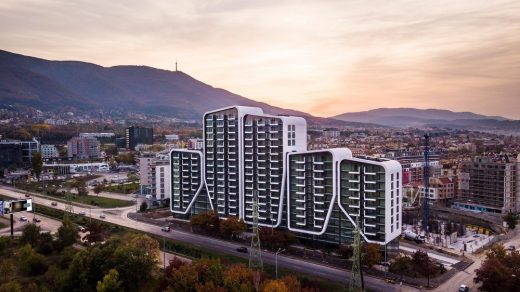
photograph : 3 in Spirit
A3 – Advanced Architecture Apartments in Sofia
Architecture School, Sofia
Architects: STARH
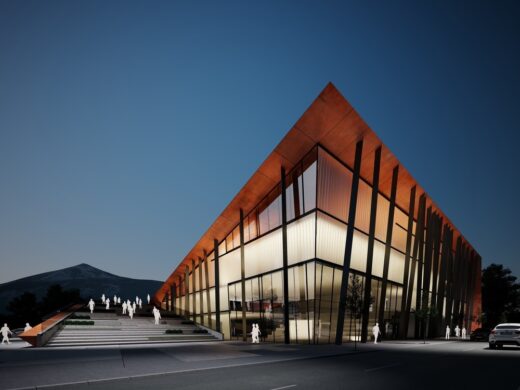
image © Georgi Pasev
Architecture School Sofia
Observation House, Northeast Bulgaria
Design: I/O architects
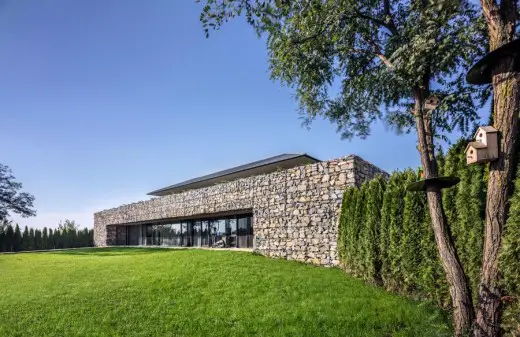
photograph : Asen Emilov
Observation House in Bulgaria
Pagoda House, Sofia
Design: I/O architects
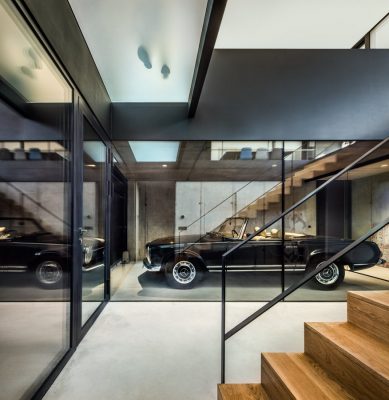
photo : Assen Emilov
Pagoda House in Sofia
Astral Tower, Varna
Architects: STARH
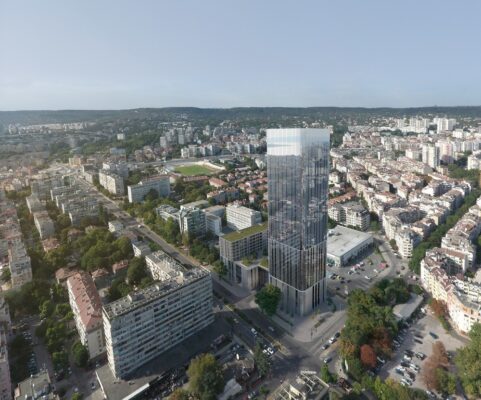
image © STARH
Astral Tower Building, Varna
Architecture Competitions
Architectural Competitions : links
Architecture Competitions
Europan 17 Design Competition

Europan 17 Design Competition
Adaptive Reuse: Design Transformations for Community Healthcare
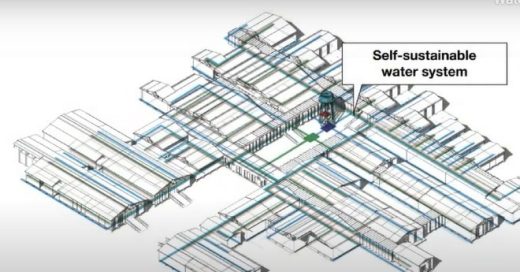
image courtesy of architectural contest
2023 Epidemic Urbanism Initiative Design Competition
Eurasian Prize 2022 competition
Comments / photos for the EPAC Experimental Puppetry Arts Centre Bulgaria Competition Controversy News page welcome

